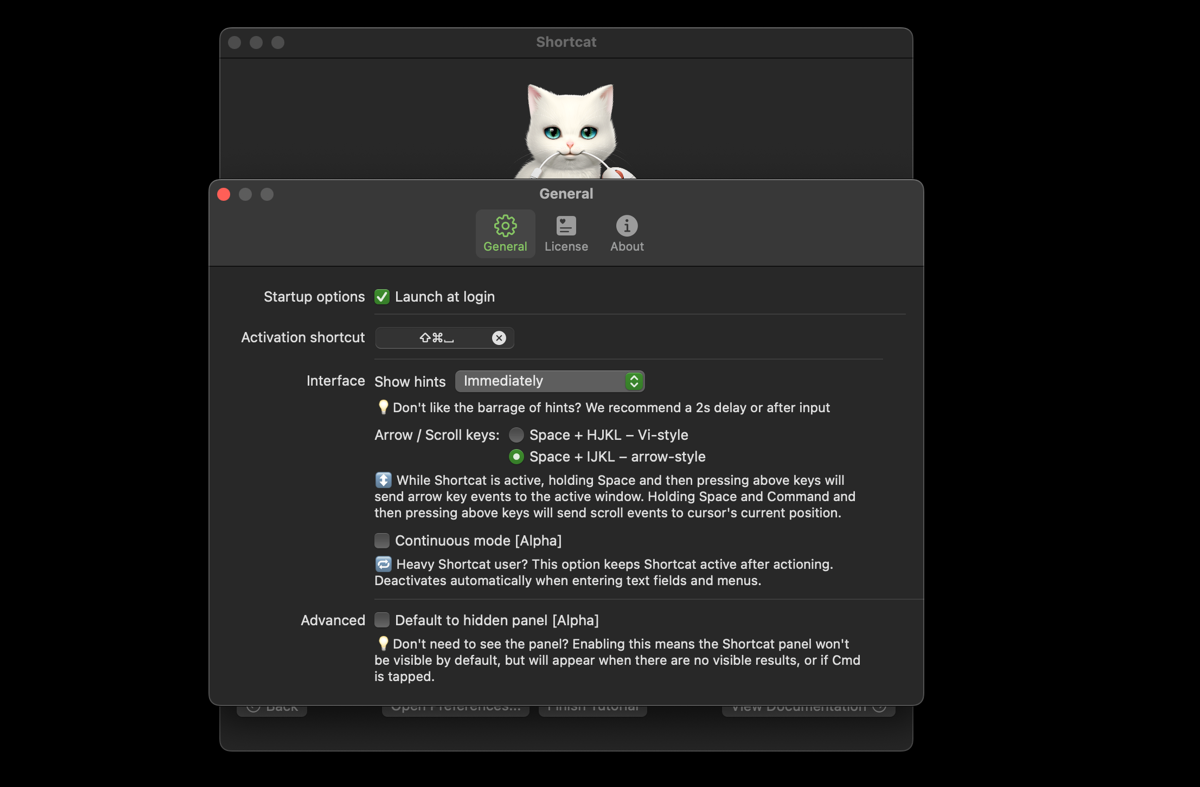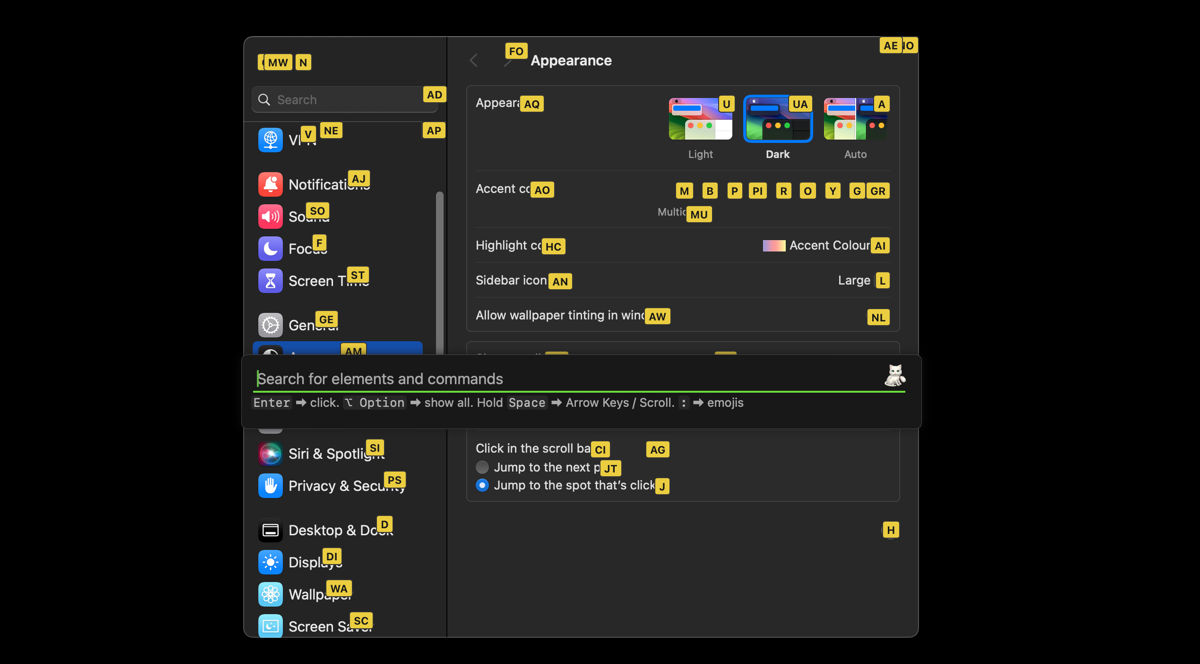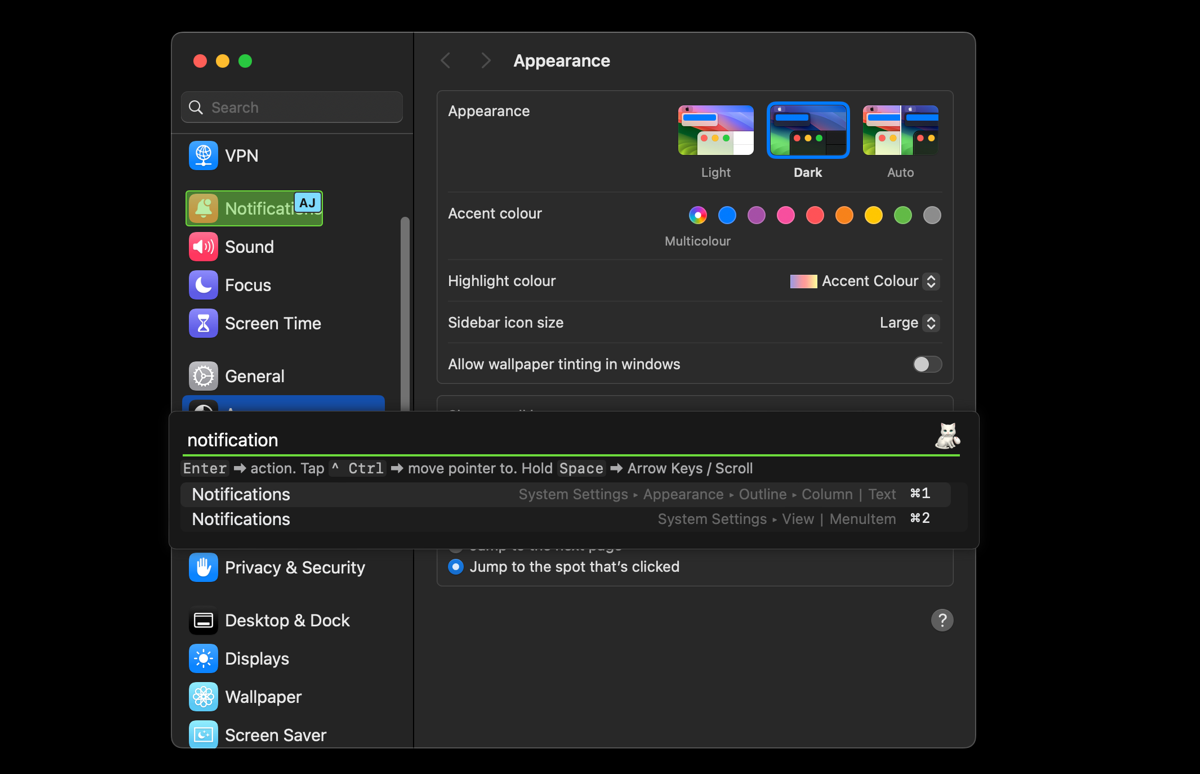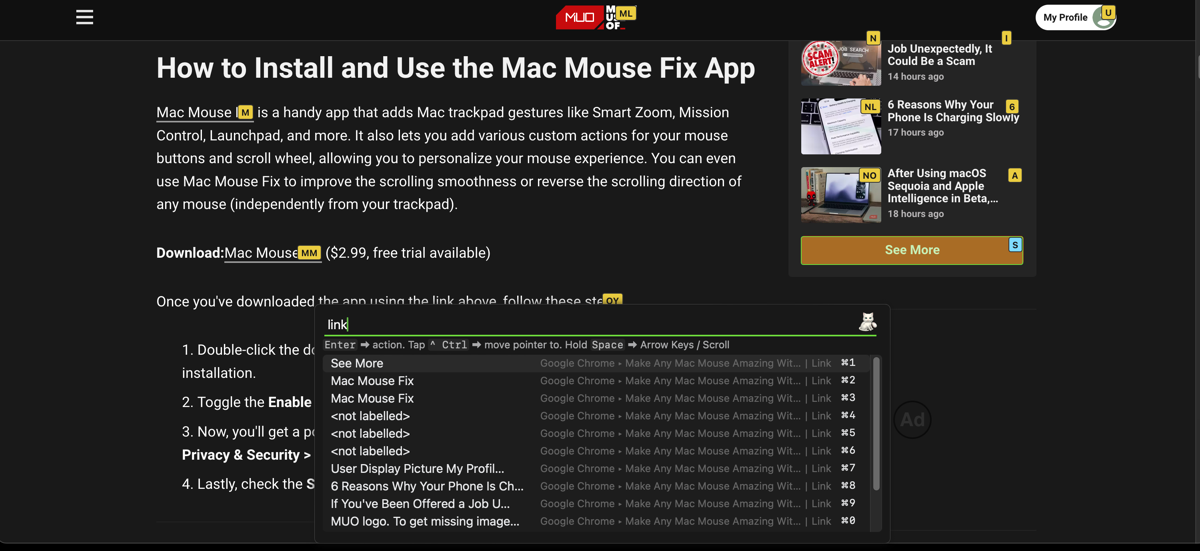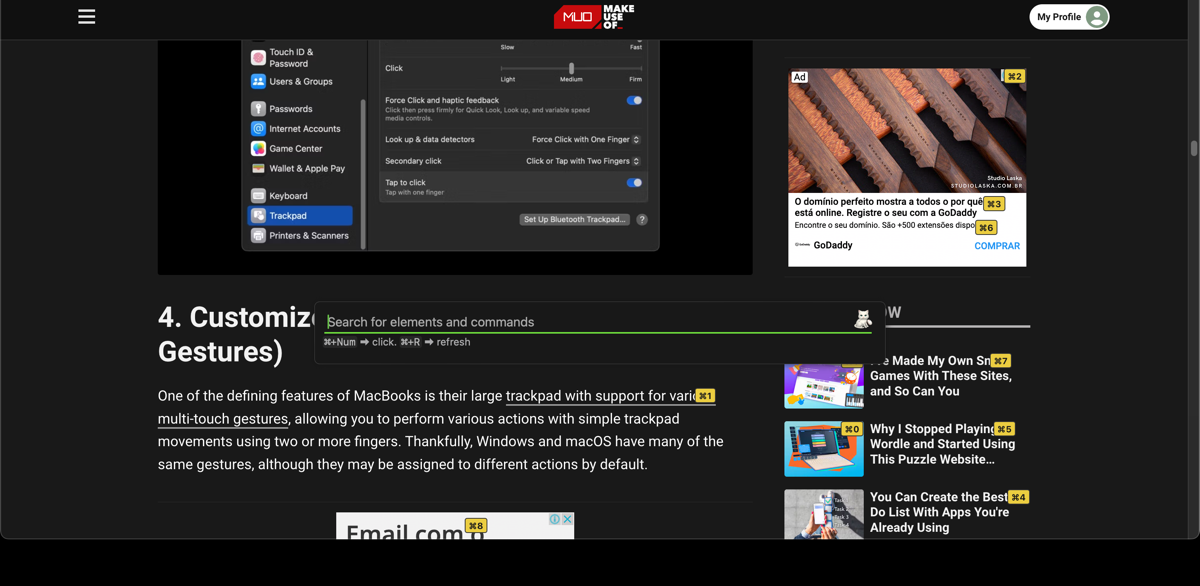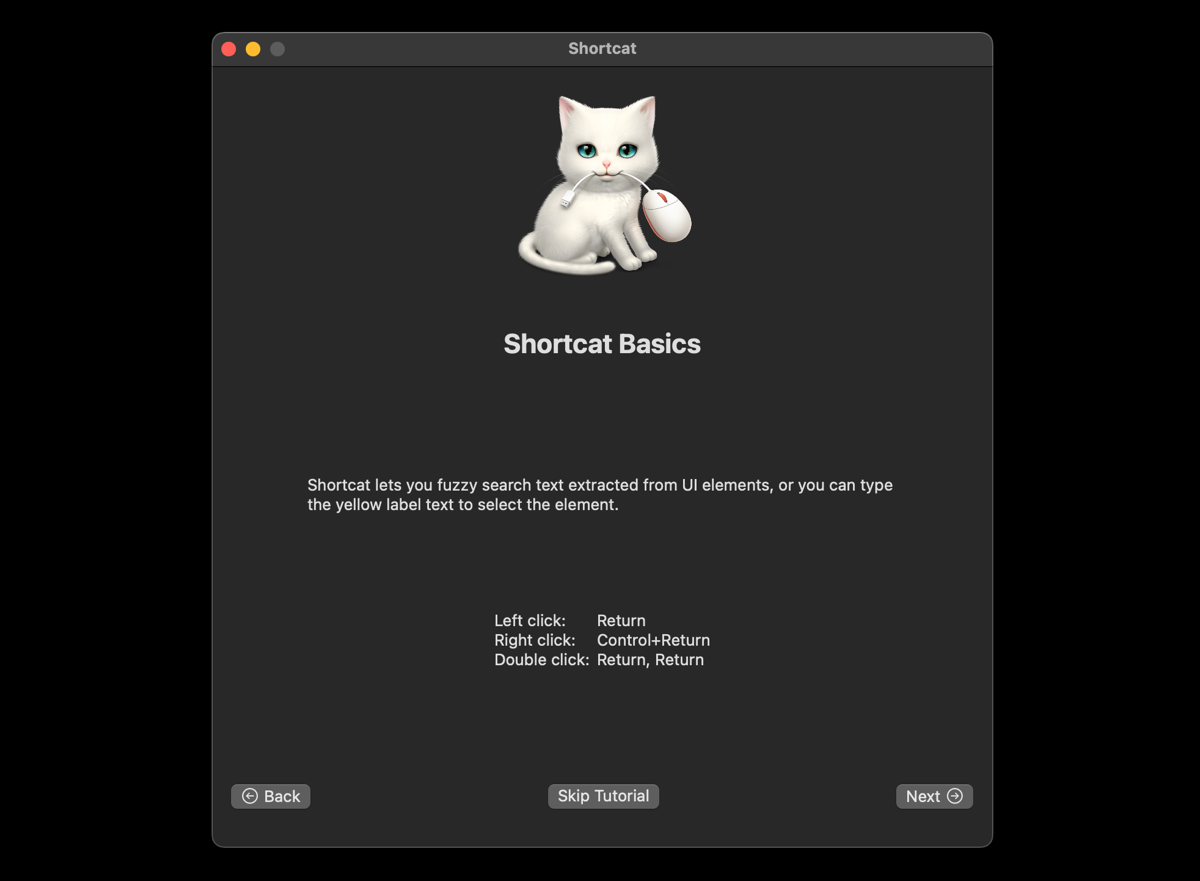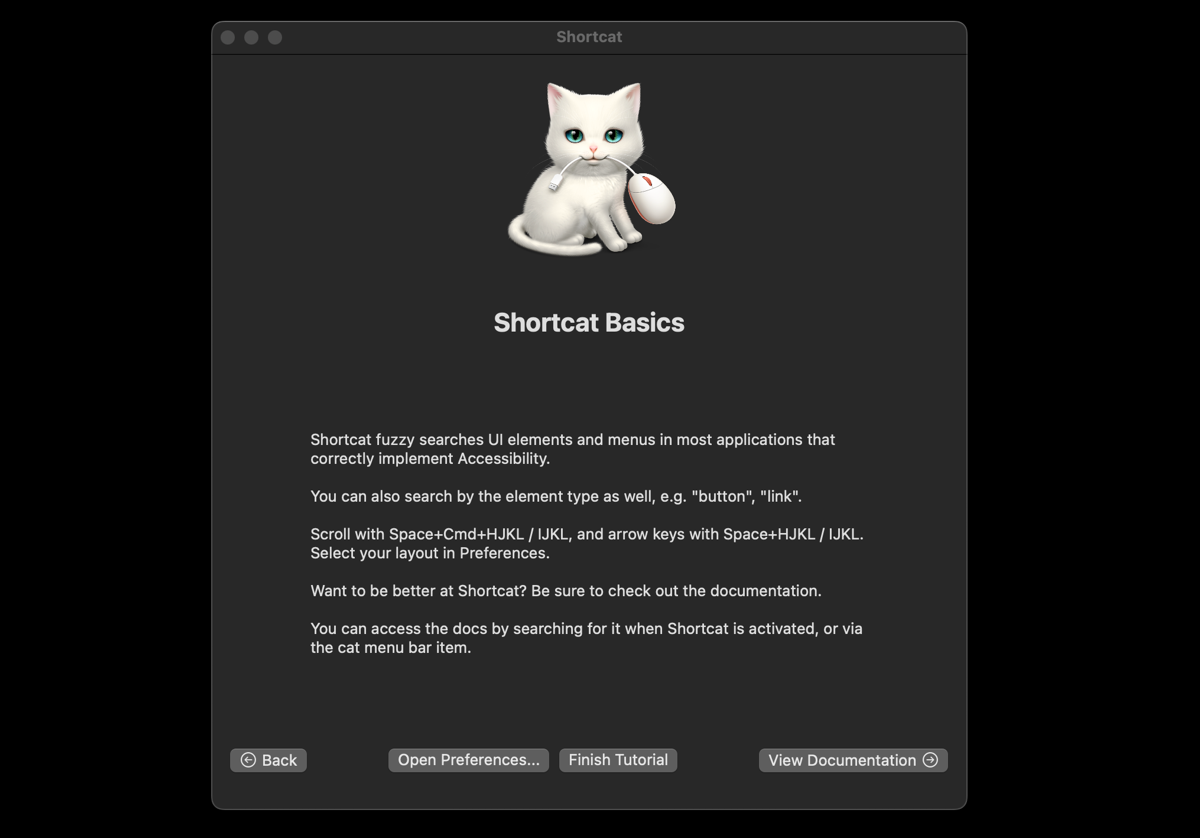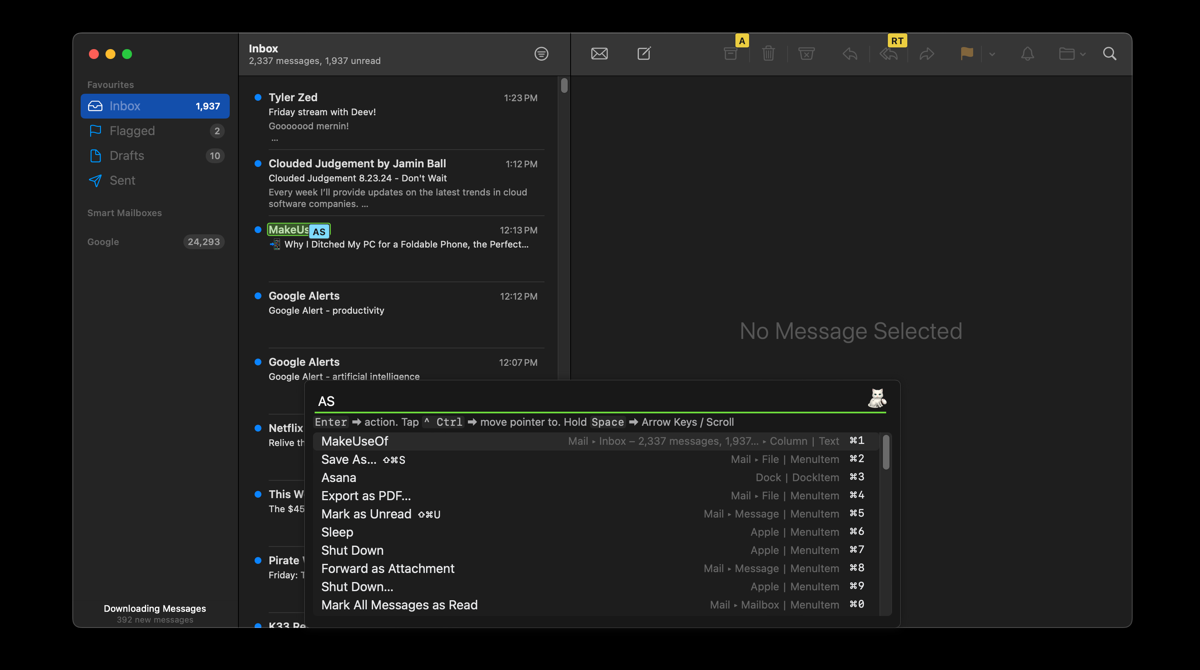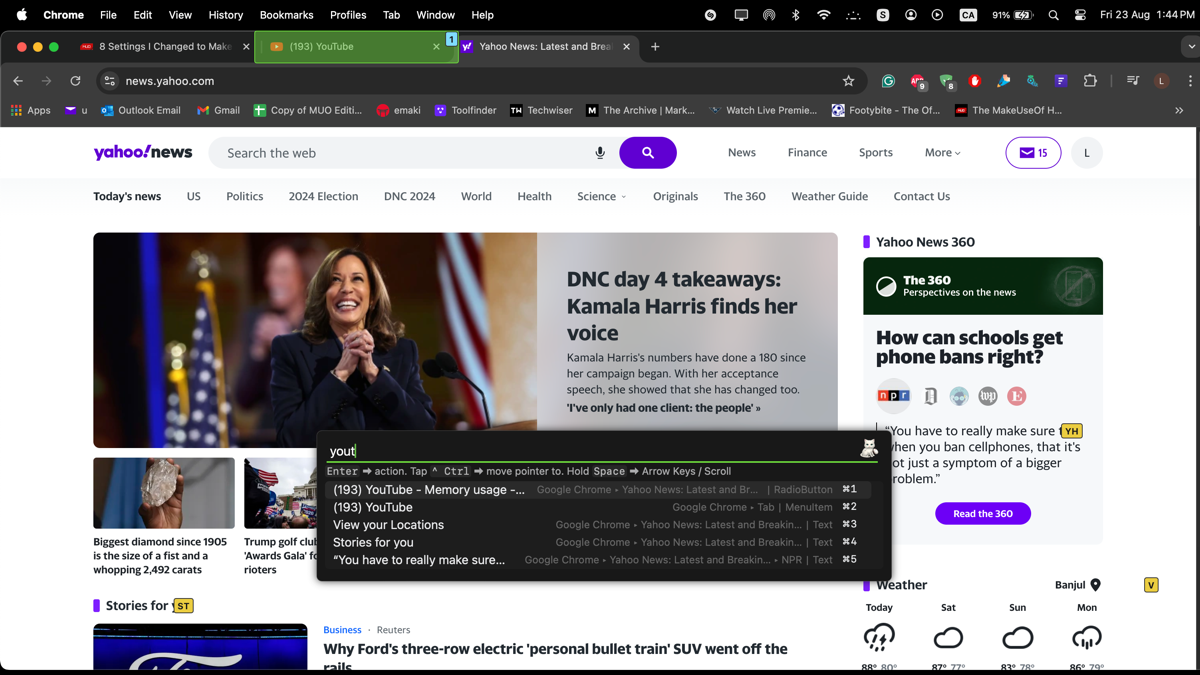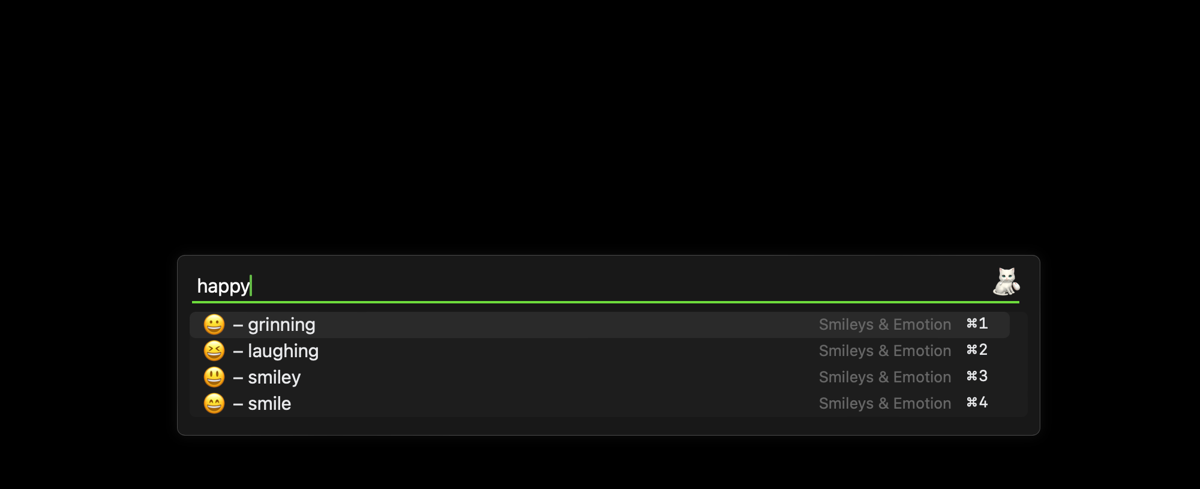
This App Lets Me Easily Use My Mac Without a Mouse
Key Takeaways
- Shortcat is a free Mac app that indexes clickable UI elements and assigns shortcuts, allowing you to navigate without a mouse.
- You can search and select on-screen elements using Shortcat by typing letter hints, the element’s name, or filtering by type.
- Shortcat simulates mouse actions like clicking, scrolling, and modifier clicks using keyboard shortcuts.
Your Mac’s trackpad or mouse lets you navigate your computer. However, if you prefer a keyboard-only approach or, at least, want to use your trackpad less frequently, you can use Shortcat to access and interact with elements on your screen without a mouse.
Install and Customize Shortcat
Shortcat is a free Mac app that indexes clickable UI elements on your screen and assigns shortcuts or lets you search for them, allowing you to navigate your Mac with a few keystrokes. You can use Shortcat to scroll, click buttons, open compatible apps, browse the web, and more, without a trackpad or mouse. So, whether your mouse is not working on your Mac or you like keeping your hands on your keyboard, Shortcat is a great app to try.
Download: Shortcat (Free)
Here’s how to install and customize Shortcat after downloading it using the link above:
- Double-click the downloaded Shortcat file and click Open on the pop-up window.
- You’ll get a welcome window prompting you to give permission to the app. Click the Request Permission button and Open System Settings on the next page. Toggle on the switch next to Shortcat.
- Click Next on the subsequent page that opens to confirm that the permission was granted.
- You can set Shortcat’s keyboard activation shortcut on the next window or click Next if you are happy with the default Cmd + Shift + Space.
- The next window shows a quick tutorial on how to use Shortcat. Click Next and then Open Preferences to customize Shortcat to your liking.
- Once you’re done, click Finish Tutorial.
After installation, you can return to the preferences menu anytime by clicking the Shortcat icon in the menu bar and selecting Preferences.
Using Shortcat to Search and Select On-Screen Elements
Shortcat offers several ways to search for clickable on-screen elements without taking your hands off your keyboard. You can trigger Shortcat using your selected keyboard shortcut or the default Cmd + Shift + Space. Here are some ways to use Shortcat to interact with on-screen elements:
Search and Select With Letter Hints
One of the quickest ways to search for on-screen elements using Shortcat is by selecting the two-letter hints that appear in yellow boxes over them. After activating Shortcat using the Cmd + Shift + Space keyboard shortcut, you’ll see yellow boxes pop up, each containing one or two letters.
Type the letter(s) corresponding to the element you want to select and hit Return (or Enter). For example, to go to the Notification setting (in the screenshot below), type AJ to highlight it, and hit Return.
Search by Typing the Element’s Name
Another quick way to interact with on-screen elements is by typing the element’s name into the Shorcat search box. For example, type Notification into Shortcat’s search bar and hit Return. This works best when you know what you’re looking for.
Filter by Element Type
Sometimes, you may want to narrow down your search by specifying the type of element you’re looking for. For example, if you only want to select links on the screen, you can type Link into Shortcat’s search bar. This will filter out any other elements and only show links on the screen, which you can select using the two-letter hints.
Select Commonly Used Elements Using Cmd + Number
Shortcat lets you use the Cmd + Num shortcut to pick from commonly used elements on the list with minimal effort. Hold Cmd and press the corresponding number key to select the element.
Using Shortcat to Simulate Various Mouse Actions
Beyond selecting on-screen UI elements, Shortcat also allows you to simulate various mouse actions like clicking and scrolling using your keyboard. Here’s a breakdown of the key mouse actions you can perform using Shortcat:
Left, Right, and Double-Click Actions With Shortcat
After selecting a clickable element, as described above, press Return (or Enter) to perform a left-click. To simulate a double-click, press Return twice. For example, to open a file on your Mac, you would select the file and press Return twice. Lastly, to simulate a right-click and open the context menu, simply press Control + Return.
Modifier Clicks With Shortcat
Shortcat also supports various modifier clicks, which are performed by holding a modifier key and Return. For example, you can use Cmd + Return to open a link in a new tab or Shift + Return to select several on-screen items.
How to Scroll Using Shortcat
Shortcat lets you scroll through content on your screen using just your keyboard. Hold Space + Cmd and I, J, K, or L to scroll up, left, down, or right, respectively. For example, to scroll down, simply hold Space + Cmd and press K multiple times until the desired section is in view.
In addition, Shortcat lets you use keyboard shortcuts to navigate active windows just like you would with arrow keys (since arrow keys are used to navigate clickable UI elements when Shortcat is active). Hold Space and press I, J, K, or L to simulate arrow key functionalities in an active window.
Using Shortcat in Your Browser and Other Compatible Apps
Shortcat can enhance your Mac workflow across various apps like Safari, Chrome, Mail, Slack, Teams, Notion, and more. Here are some common use cases that demonstrate how you can navigate your Mac efficiently using Shorcat
Navigate Apple Mail
You can use Shortcat to open and navigate your email folders in Apple’s Mail app. Activate Shortcat by pressing Cmd + Shift + Space, then type Launchpad and hit Return. As described above, you can use Shortcat to select any clickable UI element in Mail, including specific emails, trash, archive, reply, and more. You can navigate other compatible apps similarly using Shortcat.
Switching Tabs in Chrome or Safari
You probably have multiple tabs open in Chrome at any given time. Instead of manually clicking through each tab with your mouse, use Shortcat to quickly find the one you need. Simply activate Shortcat, type the tab’s name or select using the letter hints, and press Return.
Using Shortcat as Your Emoji Picker
You can use Shortcat to type emojis on your Mac. This can be handy if you’ve reassigned the Function (Fn)/Globe key to something else. Simply press Cmd + Shift + Space to activate Shortcat, press the : (colon) key, and type the emoji you want to insert—for instance, sad, happy, rocket, etc. Shortcat will show you a list of matching emojis from which you can select and hit Return to insert.
Overall, Shortcat can be useful for navigating and executing actions quickly on your Mac using your keyboard alone. Although it certainly takes some time to learn and get used to, it can greatly improve your productivity once you master it. So, try it out and see how it can enhance your Mac experience.
